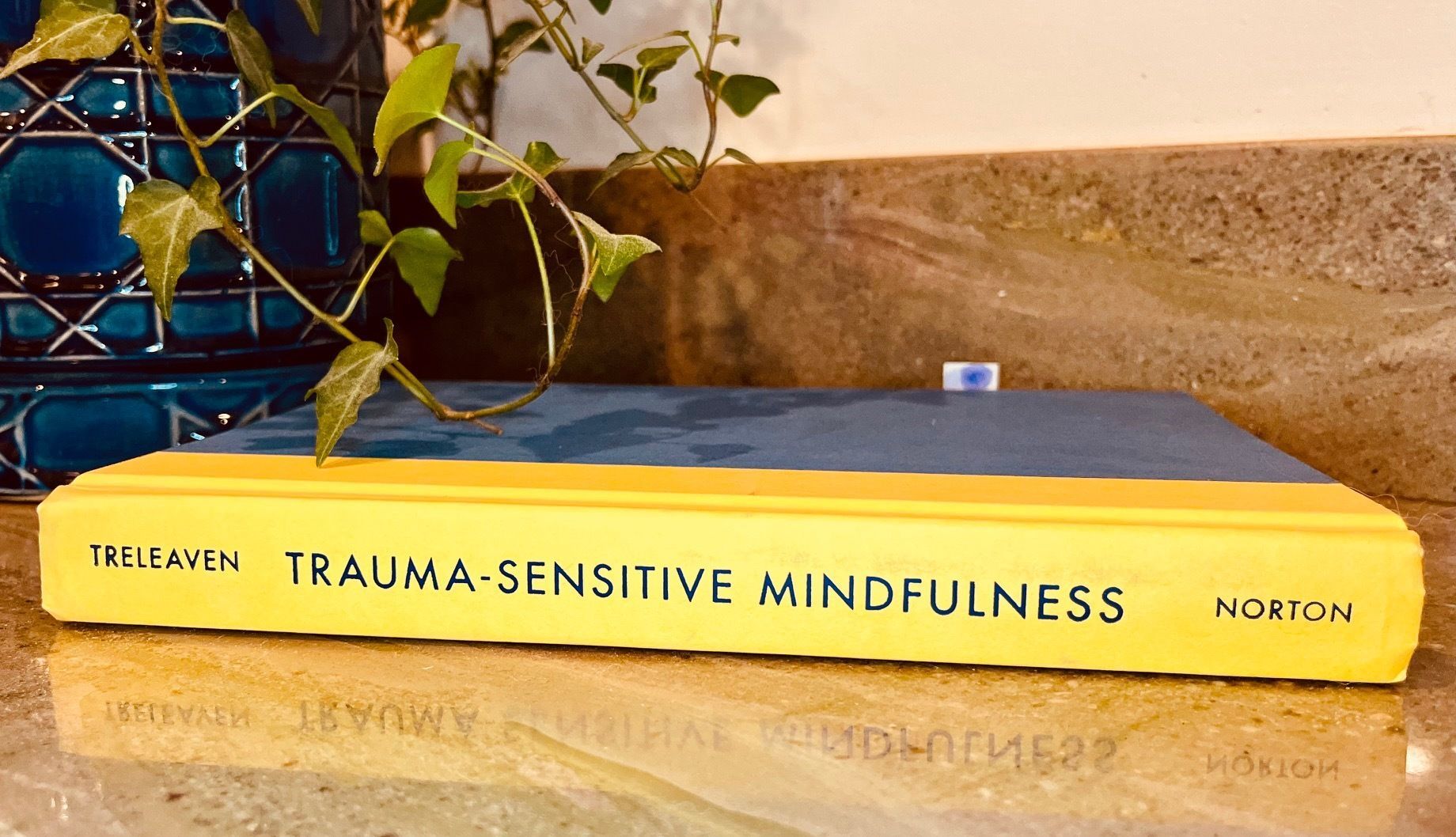What is trauma-informed mindfulness?
The relationship between mindfulness and PTSD is complicated, but SO worth understanding.
Mindfulness is
one of the most effective treatments
for the symptoms of PTSD.
~AND~
Past traumas
can sometimes be rekindled
by mindful meditation.
To heal, we need to hold both of these truths with respect.
TRUE: Mindfulness asks us to look inward, to quiet our thoughts and observe what's in our minds, and sometimes we find that we've been using distractions to avoid something really traumatic and terrifying. In fact, we can avoid remembering or processing traumatic events for decades. Sometimes, mindfulness allows those past moments of fight/flight/freeze to return as if they are happening RIGHT NOW. In this way, it's possible to be re-traumatized by mindful meditation. What's worse, we don't know what's happening, how to respond to it, and there is generally no professional nearby to walk us through it.
TRUE: Perhaps THE MOST EFFECTIVE WAY to move yourself out of fight/flight/freeze is to ground yourself in the present moment, which is mindfulness. Not only that, but regular mindfulness practice, over time, has been shown to reduce stress hormones cortisol and adrenaline, slow overall heart rates, decrease anxiety, decrease depression, and minimize chances of contracting some long-term illnesses, all of which are symptoms of PTSD.
THE ANSWER: If you suffer from PTSD, approach mindfulness cautiously and slowly.
- Practice noticing your own alarm levels. If you feel anxiety, fear, or agitation that measures over 6 on a scale of 1 to 10 (10 being the worst), STOP MEDITATING for the moment. There is nothing wrong with opening your eyes and even standing up and leaving the room. David Treleaven calls this your "Window of Tolerance." (Trauma-Sensitive Mindfulness; Practices for Safe and Transformative Healing, by David Treleaven)
- Titrate your meditation practice. Start with one minute at first, and notice where you are in your Window of Tolerance. After you can meditate for one minute without reaching a 6 or above in your Window of Tolerance, try meditating for two minutes. Add time to your meditation practice one minute at a time if you need to.
If you do notice the sensations & thoughts of fight/flight/freeze showing up, pause your mindfulness practice and ask yourself what things are triggering you when you meditate. You need to know that ALL ASPECTS OF MEDITATION ARE COMPLETELY UNDER YOUR OWN CONTROL, so you can tailor your meditation to expand your Window of Tolerance.
- Meditation is your choice, every time. You should only ever meditate because you choose to, not because it's required.
- You do not have to close your eyes. Other options include gazing at the floor in front of you, or into the space about three feet in front of you, or at part of your body like the palm of your hand...
- You do not have to position your body the way the instructor tells you to, or in the same way as everyone else in the room. Options include: sitting on the floor, sitting on a cushion, sitting on a chair, laying down, walking slowly, standing in place, swaying your body gently...
- You do not have to meditate with others. Recorded guided meditations can be very useful if the presence of other people is a trigger. In that case, you can choose the space in which you meditate to be sure it's one where you feel safe & protected.
- If you don't feel safe in a particular meditation space, you may decide to mention it to the teacher, who can recommend or make some changes. You can control where you sit in a room to minimize triggers. You can decide to try a different class in a different space.
- Notice even subtle triggers of agitation. Is there a scent that bothers you, a sound, a texture? Can you notice it and see if you can either change it or sit with it?
- Bring objects with you that help you feel safe. Maybe you have a specific essential oil scent that helps you relax, or a soft sweater that makes you feel safe. If you want to sit on the floor, you can bring a yoga mat or a cushion.
- You are not stuck in one position while you meditate. If you have an itch, or your foot starts to go numb, or your back hurts, please adjust yourself! Your body needs to know that you will care for it when it asks.
- The teacher's instructions are merely suggestions. They are not commands. Practice not obeying instructions that make you feel uncomfortable, or that your body hesitates to follow.
- The essence of mindfulness lies in TWO QUESTIONS:
- What is here for me right now?
- Can I hold it?
If you realize you cannot hold what's happening right now, give yourself permission to end the meditation, or to bring your attention to something else.
Finally, if you regularly find yourself triggered into fight/flight/freeze outside of your Window of Tolerance, or if you think new memories of trauma are being unlocked, seek professional help from a LPC.










